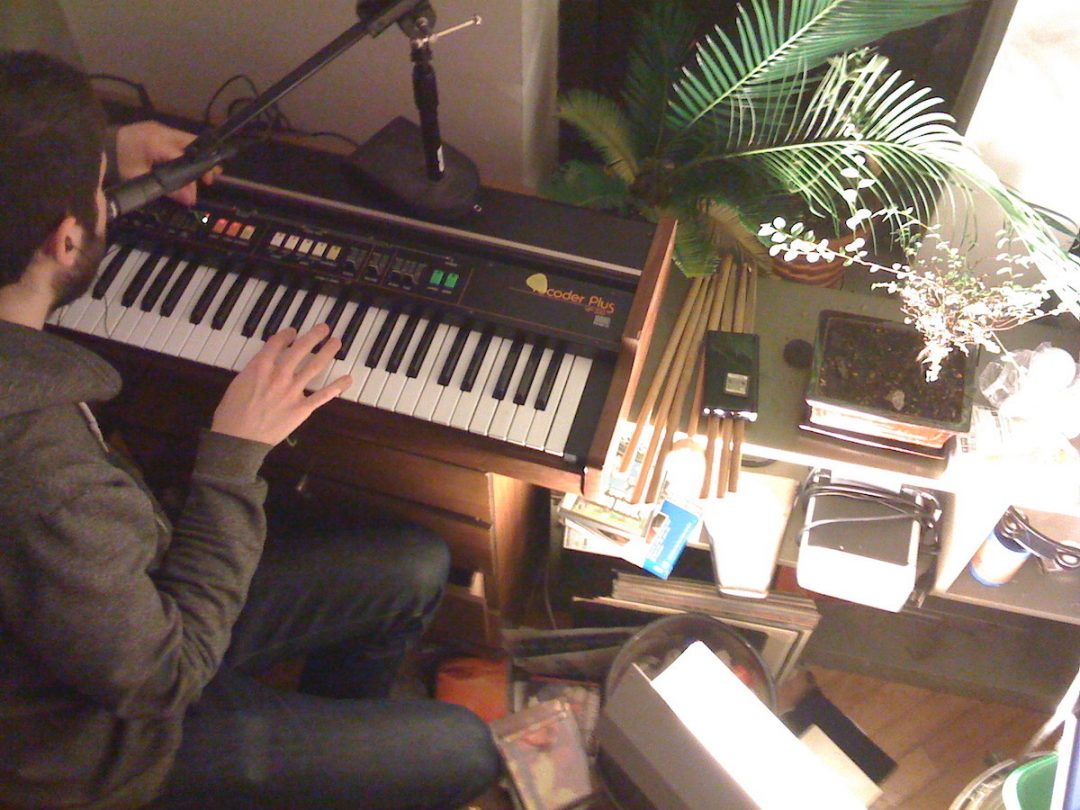The vocoder has been around for a very long time…
In 1938, Homer Dudley at Bell Labs invented it to reduce the bandwidth of speech transmission for telecommunications. In other words, it was originally intended as a voice codec for audio data compression. Transatlantic copper wire wasn’t cheap, so any way to shrink the bandwidth of a vocal signal was welcome technology.
This purpose wasn’t as cost-effective as industry had hoped. But while it hadn’t succeeded at reducing the cost of communication, it did prove to be effective for secure communication. By encrypting the control signals, voice transmission is secured against interception. None of the original signal is sent via radio—only envelopes of the bandpass filters. To this end, the vocoder was actually utilized for secure communication between political powers during World War II.
The vocoder as we know it was once again repurposed as an electronic instrument!
How does a vocoder work?
A vocoder works by analyzing the sound of a “modulator signal,” e.g., the human voice. This modulator signal (also called a control signal) is then split into multiple frequency bands, and the corresponding level of each band is sent to a bandpass filter.
A vocoder then uses the amplitude of these signals to drive an instrument called a carrier. The signal is split anywhere between 8 and 20 times, and the effect retains sounds that we recognize in human speech. The more filters in use, the greater fidelity the speech will be. It then combines these sounds with the carrier, which, for musical purposes, is a synthesizer.
When using a synthesizer, you end up with a multitimbral instrument that still keeps the qualities of human speech, but adds a “robotic” effect that we’ve come to recognize in music.
Vocoders in Music
Vocoders first became popular in music in the ’70s and were used by artists such as Kraftwerk, Boney M., and Wendy Carlos. In 1981, Phil Collins used a vocoder to add effects to his vocals on “In the Air Tonight.” It’s continued to be a common effect in modern music as well, being utilized by artists such as Daft Punk, Beastie Boys, and Zedd.
One of the first attempts to use a vocoder in creating music took place as early as 1956. The “Siemens Synthesizer” was developed at the Siemens Studio for Electronic Music between 1956 and 1959. In 1968, Robert Moog broke ground on one of the first solid-state musical vocoders for the electronic music studio of the University at Buffalo.
That same year, Bruce Haack (Canadian electronic musician) built a prototype vocoder of his own, named “Farad” after the 19th century English scientist, Michael Faraday. It was featured on The Electronic Record For Children in 1969 and then on his rock album The Electric Lucifer in 1970.
In 1970, Wendy Carlos and Robert Moog built another musical vocoder—a ten-band device inspired by the Homer Dudley’s original vocoder designs. Carlos is a GRAMMY-winning electronic musician. She rose to prominence in 1968 for her album Switched-On Bach, which consisted of Johann Sebastian Bach pieces played on a Moog synthesizer. The project won her 3 GRAMMY awards. She also went on to compose the scores for Stanley Kubrick’s A Clockwork Orange and The Shining.
Her collaboration with the legendary Robert Moog proved fruitful. This vocoder used a carrier signal from a Moog modular synthesizer and the modulator from a microphone input. The output of the ten-band vocoder was somewhat intelligible but relied on specially articulated speech.
Roland VP-330
Roland’s first vocoder was the VP-330, which became one of the most popular vocoders ever produced. It was used by numerous artists, such as Vangelis for the Chariots of Fire and Blade Runner soundtracks, 10cc, and Vince Clarke (Erasure).
It was a 10-band vocoder like that which Moog produced for Wendy Carlos—it’s limited by today’s standards, but provides that classic sound. The vocoder sound was enhanced by an Ensemble effect, and it also had Strings and Human Voice (Choir) sounds, that could be either blended with the vocoder or used on their own.
